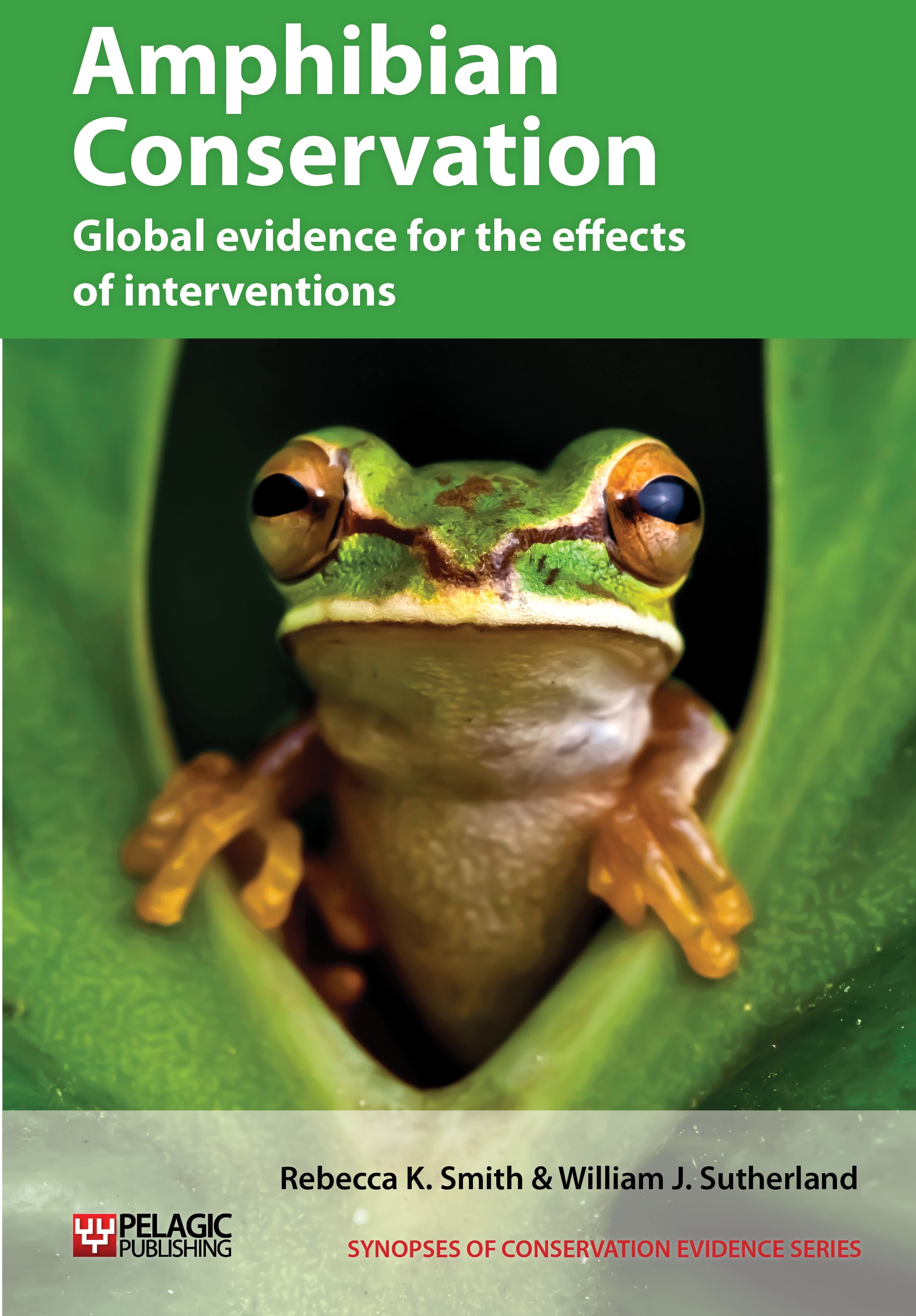Legal protection of species
-
Overall effectiveness category Unknown effectiveness (limited evidence)
-
Number of studies: 5
View assessment score
Hide assessment score
How is the evidence assessed?
-
Effectiveness
10% -
Certainty
35% -
Harms
7%
Study locations
Supporting evidence from individual studies
A review from 1990 to 2001 of great crested newt Triturus cristatus mitigation licences in England, UK (Edgar, Griffiths & Foster 2005) found that the number issued had increased. Licences issued increased from three in 1990 to 153 in 2000 and 97 in 2001. Of the 737 licences examined, only 45% contained reporting (‘return’) documents, a condition of the licence. Great crested newts are a European Protected Species. Licences are therefore issued for certain activities that involve mitigation and/or compensation for the impacts of activities such as development. Licensing information collected by the governmental licensing authorities (1990–2000: English Nature; 2000–2001: Department of the Environment, Food and Rural Affairs) was analysed.
Study and other actions testedA review of habitat compensation for amphibians in the Netherlands (Bosman et al. 2011) found that legislation was not effective at protecting habitats and amphibians. Only 10% of 20 development projects had completed habitat compensation measures as set out within legal contracts. Some of the compensation required was provided by 55% of projects and none by 35% of projects. Three of the projects created compensation habitat before destroying habitat as required, three provided it after destruction and timing was unknown for seven projects. No monitoring data were available from any project. For 11 of 31 projects work had not yet started. In the Netherlands, amphibian species are protected and loss of habitat for these species must be compensated by creating new equivalent habitat. Thirty-one projects required to undertake compensation were selected from government files. Projects were assessed on the implementation of proposed measures in the approved dispensation contracts and on monitoring data. Field visits were undertaken.
Study and other actions testedA review in 2011 of compliance with legislation during development projects in the Netherlands (Spitzen-van der Sluijs, Bosman & De Bruin 2011) found that evidence was not provided to suggest that legislation protected a population of moor frogs Rana arvalis. By 2011 only 42% of the compensation area that was required had been provided. Translocation of frogs started in 2007, but as the compensation area was not complete they were released into potentially unsuitable adjacent habitat. Monitoring before and after translocation was insufficient to determine population numbers or to assess translocation success. The ecological function of the landscape was not preserved during development. In the Netherlands, the Flora and Fauna Act protects amphibians. The development project was required by law to provide a 48 ha compensation area for moor frogs and to translocate the species from the development site to that area.
Study and other actions testedA review from 2000 to 2010 of great crested newt Triturus cristatus mitigation licences issued in England and Wales, UK (Lewis 2012) found that the number issued had increased. Licences issued in England increased from 273 in 2000 to over 600 in 2009. In Wales numbers increased from seven in 2001 to 26 in 2010. Of the licences examined, only 41% of English licences and 30% Welsh licences contained reporting (‘return’) documents, a condition of the licence. Reporting had therefore decreased since 1990–2001 (45%; Edgar, Griffiths & Foster 2005). Of those that reported, only 9% provided post-development monitoring data, a further 7% suggested surveys were undertaken but no data were provided. The majority of English (71%) and Welsh (56%) licences were for small populations (<10 recorded). Just over half of projects were considered to be of ‘low impact’, a quarter ‘medium impact’ and 20% ‘high impact’ to newts. A review of the governmental licensing authorities (Natural England and Welsh Assembly Government) licence files was undertaken.
Study and other actions testedIn a continuation of a study (Lewis 2012), a systematic review in 2011 of the effectiveness of mitigation actions for legally protected great crested newts Triturus cristatus in the UK (Lewis 2012) found that neither the 11 studies captured or monitoring data from licensed mitigation projects showed conclusive evidence that mitigation resulted in self-sustaining populations or connectivity to populations in the wider countryside. Only 5% of 460 licensed projects provided post-development monitoring data and of those, 16 reported that small populations, three medium and one large population was sustained. Two reported a loss of populations. The review identified 11 published or unpublished studies and 309 Natural England and 151 Welsh Assembly Government (licensing authorities) mitigation licence files. Mitigation measures were undertaken to reduce the impact of the development and included habitat management, as well as actions to reduce mortality including translocations.
Study and other actions tested
Where has this evidence come from?
List of journals searched by synopsis
All the journals searched for all synopses
This Action forms part of the Action Synopsis:
Amphibian Conservation
Amphibian Conservation - Published 2014
Amphibian Synopsis





)_2023.JPG)














